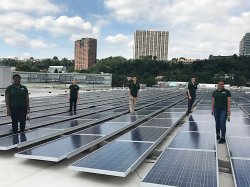2016 Faculty Grants – Completed
Development and web-based dissemination of high-resolution distributed hydrological information for promoting sustainable water management.
Dr. Clement Alo (Earth and Environmental Sciences) and Dr. Aparna Varde (Computer Science)
Research sought to develop high-resolution (10 km) climate projections for the next ~5 decades to facilitate regional and watershed scale impact assessments in sub-Saharan Africa.
The aim of these projections is to inform sustainable climate-related resource development in the region.
SDGs
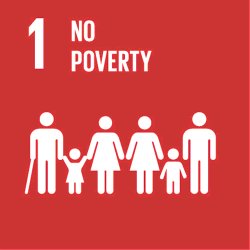
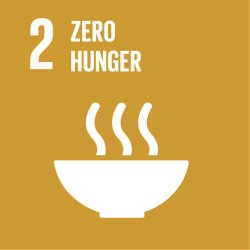
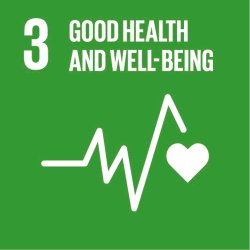
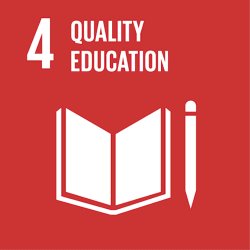
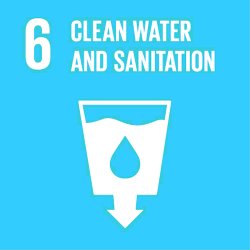
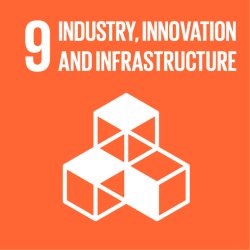
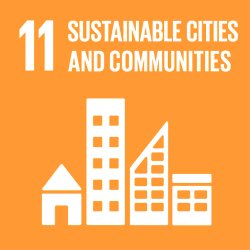
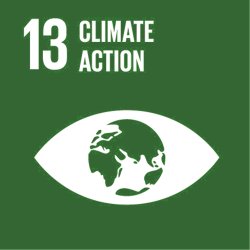
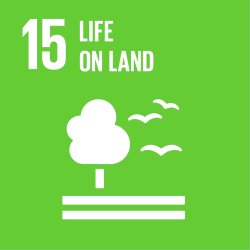
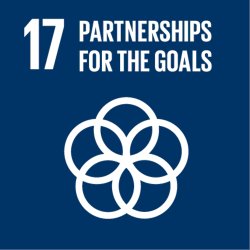
SDG Targets
- Target 1.5
- By 2030, build the resilience of the poor and those in vulnerable situations and reduce their exposure and vulnerability to climate-related extreme events and other economic, social and environmental shocks and disasters
- Indicator 1.5.1
- Number of deaths, missing persons and directly affected persons attributed to disasters per 100,000 population
- Indicator 1.5.2
- Direct economic loss attributed to disasters in relation to global gross domestic product (GDP)
- Indicator 1.5.3
- Number of countries that adopt and implement national disaster risk reduction strategies in line with the Sendai Framework for Disaster Risk Reduction 2015–2030
- Indicator 1.5.4
- Proportion of local governments that adopt and implement local disaster risk reduction strategies in line with national disaster risk reduction strategies
- Target 2.4
- By 2030, ensure sustainable food production systems and implement resilient agricultural practices that increase productivity and production, that help maintain ecosystems, that strengthen capacity for adaptation to climate change, extreme weather, drought, flooding and other disasters and that progressively improve land and soil quality
- Indicator 2.4.1
- Proportion of agricultural area under productive and sustainable agriculture
- Target 3.9
- By 2030, substantially reduce the number of deaths and illnesses from hazardous chemicals and air, water and soil pollution and contamination
- Indicator 3.9.1
- Mortality rate attributed to household and ambient air pollution
- Indicator 3.9.2
- Mortality rate attributed to unsafe water, unsafe sanitation and lack of hygiene (exposure to unsafe Water, Sanitation and Hygiene for All (WASH) services)
- Indicator 3.9.3
- Mortality rate attributed to unintentional poisoning
- Target 4.a
- Build and upgrade education facilities that are child, disability and gender sensitive and provide safe, non-violent, inclusive and effective learning environments for all
- Indicator 4.a.1
- Proportion of schools with access to (a) electricity; (b) the Internet for pedagogical purposes; (c) computers for pedagogical purposes; (d) adapted infrastructure and materials for students with disabilities; (e) basic drinking water; (f) single-sex basic sanitation facilities; and (g) basic handwashing facilities (as per the WASH indicator definitions)
- Target 6.1
- By 2030, achieve universal and equitable access to safe and affordable drinking water for all
- Indicator 6.1.1
- Proportion of population using safely managed drinking water services
- Target 6.2
- By 2030, achieve access to adequate and equitable sanitation and hygiene for all and end open defecation, paying special attention to the needs of women and girls and those in vulnerable situations
- Indicator 6.2.1 Proportion of population using (a) safely managed sanitation services and (b) a hand-washing facility with soap and water
- Target 6.3
- By 2030, improve water quality by reducing pollution, eliminating dumping and minimizing release of hazardous chemicals and materials, halving the proportion of untreated wastewater and substantially increasing recycling and safe reuse globally
- Indicator 6.3.1
- Proportion of wastewater safely treated
- Indicator 6.3.2
- Proportion of bodies of water with good ambient water quality
- Target 6.4
- By 2030, substantially increase water-use efficiency across all sectors and ensure sustainable withdrawals and supply of freshwater to address water scarcity and substantially reduce the number of people suffering from water scarcity
- Indicator 6.4.1
- Change in water-use efficiency over time
- Indicator 6.4.2
- Level of water stress: freshwater withdrawal as a proportion of available freshwater resources
- Target 6.5
- By 2030, implement integrated water resources management at all levels, including through transboundary cooperation as appropriate
- Indicator 6.5.1
- Degree of integrated water resources management implementation (0–100)
- Indicator 6.5.2
- Proportion of transboundary basin area with an operational arrangement for water cooperation
- Target 6.6
- By 2020, protect and restore water-related ecosystems, including mountains, forests, wetlands, rivers, aquifers and lakes
- Indicator 6.6.1
- Change in the extent of water-related ecosystems over time
- Target 6.a
- By 2030, expand international cooperation and capacity-building support to developing countries in water- and sanitation-related activities and programmes, including water harvesting, desalination, water efficiency, wastewater treatment, recycling and reuse technologies
- Indicator 6.a.1
- Amount of water- and sanitation-related official development assistance that is part of a government-coordinated spending plan
- Target 9.5
- Enhance scientific research, upgrade the technological capabilities of industrial sectors in all countries, in particular developing countries, including, by 2030, encouraging innovation and substantially increasing the number of research and development workers per 1 million people and public and private research and development spending
- Indicator 9.5.1
- Research and development expenditure as a proportion of GDP
- Indicator 9.5.2
- Researchers (in full-time equivalent) per million inhabitants
- Target 11.5
- By 2030, significantly reduce the number of deaths and the number of people affected and substantially decrease the direct economic losses relative to global gross domestic product caused by disasters, including water-related disasters, with a focus on protecting the poor and people in vulnerable situations
- Indicator 11.5.1
- Number of deaths, missing persons and directly affected persons attributed to disasters per 100,000 population
- Indicator 11.5.2
- Direct economic loss in relation to global GDP, damage to critical infrastructure and number of disruptions to basic services, attributed to disasters
- Target 13.1
- Strengthen resilience and adaptive capacity to climate-related hazards and natural disasters in all countries
- Indicator 13.1.1
- Number of deaths, missing persons and directly affected persons attributed to disasters per 100,000 population
- Indicator 13.1.2
- Number of countries that adopt and implement national disaster risk reduction strategies in line with the Sendai Framework for Disaster Risk Reduction 2015–2030
- Indicator 13.1.3
- Proportion of local governments that adopt and implement local disaster risk reduction strategies in line with national disaster risk reduction strategies
- Target 13.2
- Integrate climate change measures into national policies, strategies and planning
- Indicator 13.2.1
- Number of countries that have communicated the establishment or operationalization of an integrated policy/strategy/plan which increases their ability to adapt to the adverse impacts of climate change, and foster climate resilience and low greenhouse gas emissions development in a manner that does not threaten food production (including a national adaptation plan, nationally determined contribution, national communication, biennial update report or other)
- Target 13.3
- Improve education, awareness-raising and human and institutional capacity on climate change mitigation, adaptation, impact reduction and early warning
- Indicator 13.3.1
- Number of countries that have integrated mitigation, adaptation, impact reduction and early warning into primary, secondary and tertiary curricula
- Indicator 13.3.2
- Number of countries that have communicated the strengthening of institutional, systemic and individual capacity-building to implement adaptation, mitigation and technology transfer, and development actions
- Target 13.a
- Implement the commitment undertaken by developed-country parties to the United Nations Framework Convention on Climate Change to a goal of mobilizing jointly $100 billion annually by 2020 from all sources to address the needs of developing countries in the context of meaningful mitigation actions and transparency on implementation and fully operationalize the Green Climate Fund through its capitalization as soon as possible
- Indicator 13.a.1
- Mobilized amount of United States dollars per year between 2020 and 2025 accountable towards the $100 billion commitment
- Target 13.b
- Promote mechanisms for raising capacity for effective climate change-related planning and management in least developed countries and small island developing States, including focusing on women, youth and local and marginalized communities
- Indicator 13.b.1
- Number of least developed countries and small island developing States that are receiving specialized support, and amount of support, including finance, technology and capacity-building, for mechanisms for raising capacities for effective climate change-related planning and management, including focusing on women, youth and local and marginalized communities
- Target 15.1
- By 2020, ensure the conservation, restoration and sustainable use of terrestrial and inland freshwater ecosystems and their services, in particular forests, wetlands, mountains and drylands, in line with obligations under international agreements
- Indicator 15.1.1
- Forest area as a proportion of total land area
- Indicator 15.1.2
- Proportion of important sites for terrestrial and freshwater biodiversity that are covered by protected areas, by ecosystem type
- Target 17.6
- Enhance North-South, South-South and triangular regional and international cooperation on and access to science, technology and innovation and enhance knowledge-sharing on mutually agreed terms, including through improved coordination among existing mechanisms, in particular at the United Nations level, and through a global technology facilitation mechanism
- Indicator 17.6.1
- Number of science and/or technology cooperation agreements and programmes between countries, by type of cooperation
- Indicator 17.6.2
- Fixed Internet broadband subscriptions per 100 inhabitants, by speed
- Target 17.7
- Promote the development, transfer, dissemination and diffusion of environmentally sound technologies to developing countries on favorable terms, including on concessional and preferential terms, as mutually agreed
- Indicator 17.7.1
- Total amount of approved funding for developing countries to promote the development, transfer, dissemination and diffusion of environmentally sound technologies
Connecting New Jersey farmers and consumers through direct-to-consumer marketing channels: A transdisciplinary approach.
Dr. Renata Blumberg (Nutrition and Food Studies) and Dr. Pankaj Lal (Earth and Environmental Studies)
Research sought to analyze how farmers’ markets in urban communities could play a role in improving both farmer livelihoods and the nutrition of low-income consumers with limited access to fresh fruits and vegetables.
The goal of this research is to bridge the gap between New Jersey’s agricultural producers/farmers and consumers, advancing sustainable development in New Jersey.
SDGs


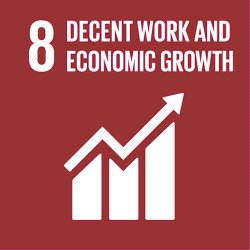
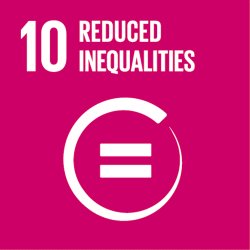

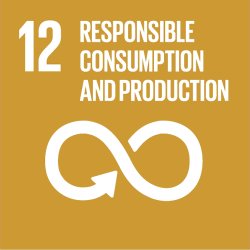

SDG Targets
- Target 1.2
- By 2030, reduce at least by half the proportion of men, women and children of all ages living in poverty in all its dimensions according to national definitions
- Indicator 1.2.1
- Proportion of population living below the national poverty line, by sex and age
- Indicator 1.2.2
- Proportion of men, women and children of all ages living in poverty in all its dimensions according to national definitions
- Target 2.1
- By 2030, end hunger and ensure access by all people, in particular the poor and people in vulnerable situations, including infants, to safe, nutritious and sufficient food all year round
- Indicator 2.1.1
- Prevalence of undernourishment
- Indicator 2.1.2
- Prevalence of moderate or severe food insecurity in the population, based on the Food Insecurity Experience Scale (FIES)
- Target 2.2
- By 2030, end all forms of malnutrition, including achieving, by 2025, the internationally agreed targets on stunting and wasting in children under 5 years of age, and address the nutritional needs of adolescent girls, pregnant and lactating women and older persons
- Indicator 2.2.1
- Prevalence of stunting (height for age <-2 standard deviation from the median of the World Health Organization (WHO) Child Growth Standards) among children under 5 years of age
- Indicator 2.2.2
- Prevalence of malnutrition (weight for height >+2 or <-2 standard deviation from the median of the WHO Child Growth Standards) among children under 5 years of age, by type (wasting and overweight)
- Target 2.3
- By 2030, double the agricultural productivity and incomes of small-scale food producers, in particular women, indigenous peoples, family farmers, pastoralists and fishers, including through secure and equal access to land, other productive resources and inputs, knowledge, financial services, markets and opportunities for value addition and non-farm employment
- Indicator 2.3.1
- Volume of production per labor unit by classes of farming/pastoral/forestry enterprise size
- Indicator 2.3.2
- Average income of small-scale food producers, by sex and indigenous status
- Target 8.2
- Achieve higher levels of economic productivity through diversification, technological upgrading and innovation, including through a focus on high-value added and labor-intensive sectors
- Indicator 8.2.1
- Annual growth rate of real GDP per employed person
- Target 10.1
- By 2030, progressively achieve and sustain income growth of the bottom 40 per cent of the population at a rate higher than the national average
- Indicator 10.1.1
- Growth rates of household expenditure or income per capita among the bottom 40 per cent of the population and the total population
- Target 11.a
- Support positive economic, social and environmental links between urban, peri-urban and rural areas by strengthening national and regional development planning
- Indicator 11.a.1
- Proportion of population living in cities that implement urban and regional development plans integrating population projections and resource needs, by size of city
- Target 12.3
- By 2030, halve per capita global food waste at the retail and consumer levels and reduce food losses along production and supply chains, including post-harvest losses
- Indicator 12.3.1
- (a) Food loss index and (b) food waste index
- Target 17.16
- Enhance the Global Partnership for Sustainable Development, complemented by multi-stakeholder partnerships that mobilize and share knowledge, expertise, technology and financial resources, to support the achievement of the Sustainable Development Goals in all countries, in particular developing countries
- Indicator 17.16.1
- Number of countries reporting progress in multi-stakeholder development effectiveness monitoring frameworks that support the achievement of the sustainable development goals
- Target 17.17
- Encourage and promote effective public, public-private and civil society partnerships, building on the experience and resourcing strategies of partnerships
- Indicator 17.17.1
- Amount of United States dollars committed to (a) public-private partnerships and (b) civil society partnerships
Towards a sustainable direct potable reuse (DPR) approach with stormwater.
Dr. Yang Deng (Earth and Environmental Studies) and Dr. Pankaj Lal (Earth and Environmental Studies)
Research sought to develop a new direct potable reuse (DPR) approach using storm water as an alternative water source to support sustainable development.
The research also focused on developing an innovative storm water management strategy to alleviate the runoff induced pollution to natural water bodies for safeguarding healthy ecosystems and recovering the productivity and cost-loss related to the environmental pollution.
SDGs



SDG Targets
- Target 6.a
- By 2030, expand international cooperation and capacity-building support to developing countries in water- and sanitation-related activities and programmes, including water harvesting, desalination, water efficiency, wastewater treatment, recycling and reuse technologies
- Indicator 6.a.1
- Amount of water- and sanitation-related official development assistance that is part of a government-coordinated spending plan
- Target 6.4
- By 2030, substantially increase water-use efficiency across all sectors and ensure sustainable withdrawals and supply of freshwater to address water scarcity and substantially reduce the number of people suffering from water scarcity
- Indicator 6.4.1
- Change in water-use efficiency over time
- Indicator 6.4.2
- Level of water stress: freshwater withdrawal as a proportion of available freshwater resources
- Target 6.3
- By 2030, improve water quality by reducing pollution, eliminating dumping and minimizing release of hazardous chemicals and materials, halving the proportion of untreated wastewater and substantially increasing recycling and safe reuse globally
- Indicator 6.3.1
- Proportion of wastewater safely treated
- Indicator 6.3.2
- Proportion of bodies of water with good ambient water quality
- Target 6.5
- By 2030, implement integrated water resources management at all levels, including through transboundary cooperation as appropriate
- Indicator 6.5.1
- Degree of integrated water resources management implementation (0-100)
- Indicator 6.5.2
- Proportion of transboundary basin area with an operational arrangement for water cooperation
- Target 6.b
- Support and strengthen the participation of local communities in improving water and sanitation management
- Indicator 6.b.1
- Proportion of local administrative units with established and operational policies and procedures for participation of local communities in water and sanitation management
- Target 6.4
- By 2020, achieve the environmentally sound management of chemicals and all wastes throughout their life cycle, in accordance with agreed international frameworks, and significantly reduce their release to air, water and soil in order to minimize their adverse impacts on human health and the environment
- Indicator 12.4.1
- Number of parties to international multilateral environmental agreements on hazardous waste, and other chemicals that meet their commitments and obligations in transmitting information as required by each relevant agreement
- Indicator 12.4.2
- Hazardous waste generated per capita and proportion of hazardous waste treated, by type of treatment
- Target 12.8
- By 2030, ensure that people everywhere have the relevant information and awareness for sustainable development and lifestyles in harmony with nature
- Indicator 12.8.1
- Extent to which (i) global citizenship education and (ii) education for sustainable development (including climate change education) are mainstreamed in (a) national education policies; (b) curricula; (c) teacher education; and (d) student assessment
- Target 15.1
- By 2020, ensure the conservation, restoration and sustainable use of terrestrial and inland freshwater ecosystems and their services, in particular forests, wetlands, mountains and drylands, in line with obligations under international agreements
- Indicator 15.1.1
- Forest area as a proportion of total land area
- Indicator 15.1.2
- Proportion of important sites for terrestrial and freshwater biodiversity that are covered by protected areas, by ecosystem type
Increasing contaminated soil enzymatic function with targeted microbial inocula.
Dr. Jennifer Krummins (Biology) and Dr. Nina Goodey (Chemistry and Biochemistry)
Research sought to elucidate the factors driving soil enzymatic activity in contaminated soil at Liberty State Park (LSP).
Research also explored how the microbial community functions in the restoration and management of degraded and post-industrial soils, which are necessary to sustainably support the increasing environmental pressure associated with growing population density.
As a result of this funding, three conference presentations and one invited seminar were given.
SDGs




SDG Targets
- Target 2.4
- By 2030, ensure sustainable food production systems and implement resilient agricultural practices that increase productivity and production, that help maintain ecosystems, that strengthen capacity for adaptation to climate change, extreme weather, drought, flooding and other disasters and that progressively improve land and soil quality
- Indicator 2.4.1
- Proportion of agricultural area under productive and sustainable agriculture
- Target 8.4
- Improve progressively, through 2030, global resource efficiency in consumption and production and endeavor to decouple economic growth from environmental degradation, in accordance with the 10-Year Framework of Programmes on Sustainable Consumption and Production, with developed countries taking the lead
- Indicator 8.4.1
- Material footprint, material footprint per capita, and material footprint per GDP
- Indicator 8.4.2
- Domestic material consumption, domestic material consumption per capita, and domestic material consumption per GDP
- Target 11.7
- By 2030, provide universal access to safe, inclusive and accessible, green and public spaces, in particular for women and children, older persons and persons with disabilities
- Indicator 11.7.1
- Average share of the built-up area of cities that is open space for public use for all, by sex, age and persons with disabilities
- Target 15.1
- By 2020, ensure the conservation, restoration and sustainable use of terrestrial and inland freshwater ecosystems and their services, in particular forests, wetlands, mountains and drylands, in line with obligations under international agreements
- Indicator 15.1.1
- Forest area as a proportion of total land area
- Indicator 15.1.2
- Proportion of important sites for terrestrial and freshwater biodiversity that are covered by protected areas, by ecosystem type
- Target 15.3
- By 2030, combat desertification, restore degraded land and soil, including land affected by desertification, drought and floods, and strive to achieve a land degradation-neutral world
- Indicator 15.3.1
- Proportion of land that is degraded over total land area
A quick, sensitive, and economical genomic diagnostic for the surveillance of pharmaceuticals and heavy metals contamination.
Research sought to use an economical and sensitive tool to detect pharmaceutical contamination that may lead to antimicrobial resistance (AMR) and drug resistant (DR) infections in developing countries.
SDGs



SDG Targets
- Target 3.d
- Strengthen the capacity of all countries, in particular developing countries, for early warning, risk reduction and management of national and global health risks
- Indicator 3.d.1
- International Health Regulations (IHR) capacity and health emergency preparedness
- Target 12.4
- By 2020, achieve the environmentally sound management of chemicals and all wastes throughout their life cycle, in accordance with agreed international frameworks, and significantly reduce their release to air, water and soil in order to minimize their adverse impacts on human health and the environment
- Indicator 12.4.1
- Number of parties to international multilateral environmental agreements on hazardous waste, and other chemicals that meet their commitments and obligations in transmitting information as required by each relevant agreement
- Indicator 12.4.2
- Hazardous waste generated per capita and proportion of hazardous waste treated, by type of treatment
- Target 17.6
- Enhance North-South, South-South and triangular regional and international cooperation on and access to science, technology and innovation and enhance knowledge-sharing on mutually agreed terms, including through improved coordination among existing mechanisms, in particular at the United Nations level, and through a global technology facilitation mechanism
- Indicator 17.6.1
- Number of science and/or technology cooperation agreements and programmes between countries, by type of cooperation
- Indicator 17.6.2
- Fixed Internet broadband subscriptions per 100 inhabitants, by speed
Climate change and housing relocation in three global cities: New York, Manila and Ho-Chi Minh City.
Dr. Robert Taylor (Earth and Environmental Studies)
Research sought to provide practical models that can aid planners, decision-makers and policy makers in global cities most vulnerable to climate change.
Research was presented at four conferences:
Passaic River Institute Symposium VIII, on October 13, 2016
The Third International Conference on Sustainable Development, Columbia University, Sep. 21–22, 2016
Annual Conference of the Association of American Geographers, April 8, 2017
Workshop at the Ho Chi Minh City University of Natural Resources and Environment.
SDGs





SDG Targets
- Target 1.5
- By 2030, build the resilience of the poor and those in vulnerable situations and reduce their exposure and vulnerability to climate-related extreme events and other economic, social and environmental shocks and disasters
- Indicator 1.5.1
- Number of deaths, missing persons and directly affected persons attributed to disasters per 100,000 population
- Indicator 1.5.2
- Direct economic loss attributed to disasters in relation to global gross domestic product (GDP)
- Indicator 1.5.3
- Number of countries that adopt and implement national disaster risk reduction strategies in line with the Sendai Framework for Disaster Risk Reduction 2015–2030
- Indicator 1.5.4
- Proportion of local governments that adopt and implement local disaster risk reduction strategies in line with national disaster risk reduction strategies
- Target 9.1
- Develop quality, reliable, sustainable and resilient infrastructure, including regional and transborder infrastructure, to support economic development and human well-being, with a focus on affordable and equitable access for all
- Indicator 9.1.1
- Proportion of the rural population who live within 2 km of an all-season road
- Target 9.5
- Enhance scientific research, upgrade the technological capabilities of industrial sectors in all countries, in particular developing countries, including, by 2030, encouraging innovation and substantially increasing the number of research and development workers per 1 million people and public and private research and development spending
- Indicator 9.5.1
- Research and development expenditure as a proportion of GDP
- Indicator 9.5.2
- Researchers (in full-time equivalent) per million inhabitants
- Target 11.1
- By 2030, ensure access for all to adequate, safe and affordable housing and basic services and upgrade slums
- Indicator 11.1.1
- Proportion of urban population living in slums, informal settlements or inadequate housing
- Target 11.3
- By 2030, enhance inclusive and sustainable urbanization and capacity for participatory, integrated and sustainable human settlement planning and management in all countries11.3.1 Ratio of land consumption rate to population growth rate
- Indicator 11.3.2
- Proportion of cities with a direct participation structure of civil society in urban planning and management that operate regularly and democratically
- Target 11.5
- By 2030, significantly reduce the number of deaths and the number of people affected and substantially decrease the direct economic losses relative to global gross domestic product caused by disasters, including water-related disasters, with a focus on protecting the poor and people in vulnerable situations
- Indicator 11.5.1
- Number of deaths, missing persons and directly affected persons attributed to disasters per 100,000 population
- Indicator 11.5.2
- Direct economic loss in relation to global GDP, damage to critical infrastructure and number of disruptions to basic services, attributed to disasters
- Target 11.7
- By 2030, provide universal access to safe, inclusive and accessible, green and public spaces, in particular for women and children, older persons and persons with disabilities11.7.1 Average share of the built-up area of cities that is open space for public use for all, by sex, age and persons with disabilities
- Indicator 11.7.2
- Proportion of persons victim of physical or sexual harassment, by sex, age, disability status and place of occurrence, in the previous 12 months
- Target 11.a
- Support positive economic, social and environmental links between urban, peri-urban and rural areas by strengthening national and regional development planning
- Indicator 11.a.1
- Proportion of population living in cities that implement urban and regional development plans integrating population projections and resource needs, by size of city
- Target 11.b
- By 2020, substantially increase the number of cities and human settlements adopting and implementing integrated policies and plans towards inclusion, resource efficiency, mitigation and adaptation to climate change, resilience to disasters, and develop and implement, in line with the Sendai Framework for Disaster Risk Reduction 2015–2030, holistic disaster risk management at all levels
- Indicator 11.b.1
- Number of countries that adopt and implement national disaster risk reduction strategies in line with the Sendai Framework for Disaster Risk Reduction 2015–2030
- Indicator 11.b.2
- Proportion of local governments that adopt and implement local disaster risk reduction strategies in line with national disaster risk reduction strategies
- Target 13.1
- Strengthen resilience and adaptive capacity to climate-related hazards and natural disasters in all countries
- Indicator 13.1.1
- Number of deaths, missing persons and directly affected persons attributed to disasters per 100,000 population
- Indicator 13.1.2
- Number of countries that adopt and implement national disaster risk reduction strategies in line with the Sendai Framework for Disaster Risk Reduction 2015–2030
- Indicator 13.1.3
- Proportion of local governments that adopt and implement local disaster risk reduction strategies in line with national disaster risk reduction strategies
- Target 13.3
- Improve education, awareness-raising and human and institutional capacity on climate change mitigation, adaptation, impact reduction and early warning
- Indicator 13.3.1
- Number of countries that have integrated mitigation, adaptation, impact reduction and
- Indicator 13.3.2
- Number of countries that have communicated the strengthening of institutional, systemic and individual capacity-building to implement adaptation, mitigation and technology transfer, and development actions
- Target 17.6
- Enhance North-South, South-South and triangular regional and international cooperation on and access to science, technology and innovation and enhance knowledge-sharing on mutually agreed terms, including through improved coordination among existing mechanisms, in particular at the United Nations level, and through a global technology facilitation mechanism
- Indicator 17.6.1
- Number of science and/or technology cooperation agreements and programmes between countries, by type of cooperation
- Target 17.7
- Promote the development, transfer, dissemination and diffusion of environmentally sound technologies to developing countries on favorable terms, including on concessional and preferential terms, as mutually agreed
- Indicator 17.7.1
- Total amount of approved funding for developing countries to promote the development, transfer, dissemination and diffusion of environmentally sound technologies
- Target 17.17
- Encourage and promote effective public, public-private and civil society partnerships, building on the experience and resourcing strategies of partnerships
- Indicator 17.17.1
- Amount of United States dollars committed to (a) public-private partnerships and (b) civil society partnerships
2017 Faculty Grants – Awarded
An integrated geological, economic, and biological beach dune model
Dr. Jorge Lorenzo Trueba (Earth and Environmental Studies) and Dr. Pankaj Lal (Earth and Environmental Studies)
SDGs


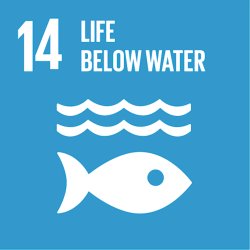
SDG Targets
- Target 11.5
- By 2030, significantly reduce the number of deaths and the number of people affected and substantially decrease the direct economic losses relative to global gross domestic product caused by disasters, including water-related disasters, with a focus on protecting the poor and people in vulnerable situations
- Indicator 11.5.1
- Number of deaths, missing persons and directly affected persons attributed to disasters per 100,000 population
- Indicator 11.5.2
- Direct economic loss in relation to global GDP, damage to critical infrastructure and number of disruptions to basic services, attributed to disasters
- Target 11.b
- By 2020, substantially increase the number of cities and human settlements adopting and implementing integrated policies and plans towards inclusion, resource efficiency, mitigation and adaptation to climate change, resilience to disasters, and develop and implement, in line with the Sendai Framework for Disaster Risk Reduction 2015–2030, holistic disaster risk management at all levels
- Indicator 11.b.1
- Number of countries that adopt and implement national disaster risk reduction strategies in line with the Sendai Framework for Disaster Risk Reduction 2015–2030
- Indicator 11.b.2
- Proportion of local governments that adopt and implement local disaster risk reduction strategies in line with national disaster risk reduction strategies
- Target 13.1
- Strengthen resilience and adaptive capacity to climate-related hazards and natural disasters in all countries
- Indicator 13.1.1
- Number of deaths, missing persons and directly affected persons attributed to disasters per 100,000 population
- Indicator 13.1.2
- Number of countries that adopt and implement national disaster risk reduction strategies in line with the Sendai Framework for Disaster Risk Reduction 2015–2030
- Indicator 13.1.3
- Proportion of local governments that adopt and implement local disaster risk reduction strategies in line with national disaster risk reduction strategies
- Target 13.3
- Improve education, awareness-raising and human and institutional capacity on climate change mitigation, adaptation, impact reduction and early warning
- Indicator 13.3.1
- Number of countries that have integrated mitigation, adaptation, impact reduction and early warning into primary, secondary and tertiary curricula
- Indicator 13.3.2
- Number of countries that have communicated the strengthening of institutional, systemic and individual capacity-building to implement adaptation, mitigation and technology transfer, and development actions
- Target 14.2
- By 2020, sustainably manage and protect marine and coastal ecosystems to avoid significant adverse impacts, including by strengthening their resilience, and take action for their restoration in order to achieve healthy and productive oceans
- Indicator 14.2.1
- Proportion of national exclusive economic zones managed using ecosystem-based approaches
Lead hazard in the urban areas of New Jersey: A multidimensional approach to sustainable risk management
Dr. Neeraj Vedwan (Anthropology), Dr. Yang Deng (Earth and Environmental Studies), and Dr. Pankaj Lal (Earth and Environmental Studies)
SDGs




SDG Targets
- Target 3.9
- By 2030, substantially reduce the number of deaths and illnesses from hazardous chemicals and air, water and soil pollution and contamination
- Indicator 3.9.2
- Mortality rate attributed to unsafe water, unsafe sanitation and lack of hygiene (exposure to unsafe Water, Sanitation and Hygiene for All (WASH) services)
- Indicator 3.9.3
- Mortality rate attributed to unintentional poisoning
- Target 3.d
- Strengthen the capacity of all countries, in particular developing countries, for early warning, risk reduction and management of national and global health risks
- Indicator 3.d.1
- International Health Regulations (IHR) capacity and health emergency preparedness
- Target 6.1
- By 2030, achieve universal and equitable access to safe and affordable drinking water for all
- Indicator 6.1.1
- Proportion of population using safely managed drinking water services
- Target 6.3
- By 2030, improve water quality by reducing pollution, eliminating dumping and minimizing release of hazardous chemicals and materials, halving the proportion of untreated wastewater and substantially increasing recycling and safe reuse globally
- Indicator 6.3.1
- Proportion of wastewater safely treated
- Indicator 6.3.2
- Proportion of bodies of water with good ambient water quality
- Target 6.5
- By 2030, implement integrated water resources management at all levels, including through transboundary cooperation as appropriate
- Indicator 6.5.1
- Degree of integrated water resources management implementation (0–100)
- Target 11.1
- By 2030, ensure access for all to adequate, safe and affordable housing and basic services and upgrade slums
- Indicator 11.1.1
- Proportion of urban population living in slums, informal settlements or inadequate housing
- Target 12.4
- By 2020, achieve the environmentally sound management of chemicals and all wastes throughout their life cycle, in accordance with agreed international frameworks, and significantly reduce their release to air, water and soil in order to minimize their adverse impacts on human health and the environment
- Indicator 12.4.1
- Number of parties to international multilateral environmental agreements on hazardous waste, and other chemicals that meet their commitments and obligations in transmitting
- Indicator 12.4.2
- Hazardous waste generated per capita and proportion of hazardous waste treated, by type of treatment
Advancing predictive understanding of hydrologic variability for sustainable management of water resource in the Passaic River Basin, New Jersey
Dr. Clement Alo (Earth and Environmental Studies), Dr. Menberu Bitew (USDA), and Dr. Ming-Liang Liu (Washington State University)
Closing the Urban Water Cycle: Sewage Sludge-Derived Biochar (SSDB) for Urban Stormwater Management
Dr. Yang Deng (Earth and Environmental Studies), Dr. Pankaj Lal (Earth and Environmental Studies), and Dr. Jinshan Gao (Chemistry and Biochemistry)
SDGs




SDG Targets
- Target 3.9
- By 2030, substantially reduce the number of deaths and illnesses from hazardous chemicals and air, water and soil pollution and contamination
- Indicator 3.9.2
- Mortality rate attributed to unsafe water, unsafe sanitation and lack of hygiene (exposure to unsafe Water, Sanitation and Hygiene for All (WASH) services)
- Indicator 3.9.3
- Mortality rate attributed to unintentional poisoning
- Target 6.1
- By 2030, achieve universal and equitable access to safe and affordable drinking water for all
- Indicator 6.1.1
- Proportion of population using safely managed drinking water services
- Target 6.3
- By 2030, improve water quality by reducing pollution, eliminating dumping and minimizing release of hazardous chemicals and materials, halving the proportion of untreated wastewater and substantially increasing recycling and safe reuse globally
- Indicator 6.3.1
- Proportion of wastewater safely treated
- Indicator 6.3.2
- Proportion of bodies of water with good ambient water quality
- Target 6.5
- By 2030, implement integrated water resources management at all levels, including through transboundary cooperation as appropriate
- Indicator 6.5.1
- Degree of integrated water resources management implementation (0–100)
- Target 11.6
- By 2030, reduce the adverse per capita environmental impact of cities, including by paying special attention to air quality and municipal and other waste management
- Indicator 11.6.1
- Proportion of urban solid waste regularly collected and with adequate final discharge out of total urban solid waste generated, by cities
- Target 12.4
- By 2020, achieve the environmentally sound management of chemicals and all wastes throughout their life cycle, in accordance with agreed international frameworks, and significantly reduce their release to air, water and soil in order to minimize their adverse impacts on human health and the environment
- Indicator 12.4.1
- Number of parties to international multilateral environmental agreements on hazardous waste, and other chemicals that meet their commitments and obligations in transmitting
- Indicator 12.4.2
- Hazardous waste generated per capita and proportion of hazardous waste treated, by type of treatment
- Target 12.5
- By 2030, substantially reduce waste generation through prevention, reduction, recycling and reuse
- Indicator 12.5.1
- National recycling rate, tons of material recycled
The Norman Sicily Project, transdisciplinary sustainability research and grant proposal development for a digital humanities effort, an evolving website that promotes the appreciation and dissemination of the monuments that survive from Sicily’s Norman period (ca. 1060 – 1194)
Dr. Dawn Hayes (History) and Dr. Greg Pope (Earth and Environmental Studies)
SDGs


SDG Targets
- Target 4.7
- By 2030, ensure that all learners acquire the knowledge and skills needed to promote sustainable development, including, among others, through education for sustainable development and sustainable lifestyles, human rights, gender equality, promotion of a culture of peace and non-violence, global citizenship and appreciation of cultural diversity and of culture’s contribution to sustainable development
- Indicator 4.7.1
- Extent to which (i) global citizenship education and (ii) education for sustainable development, including gender equality and human rights, are mainstreamed at all levels in (a) national education policies; (b) curricula; (c) teacher education; and (d) student assessment
- Target 11.4
- Strengthen efforts to protect and safeguard the world’s cultural and natural heritage
- Indicator 11.4.1
- Total expenditure (public and private) per capita spent on the preservation, protection and conservation of all cultural and natural heritage, by type of heritage (cultural, natural, mixed and World Heritage Centre designation), level of government (national, regional and local/municipal), type of expenditure (operating expenditure/investment) and type of private funding (donations in kind, private non-profit sector and sponsorship)
Development of a field-usable rapid detection test for Ranavirus, an emerging disease of ectothermic vertebrates
Dr. Kirsten Monsen (Biology), Dr. Nina Goodey (Chemistry and Biochemistry), and Dr. Lisa Hazard (Biology)
SDGs



SDG Targets
- Target 2.1
- By 2030, end hunger and ensure access by all people, in particular the poor and people in vulnerable situations, including infants, to safe, nutritious and sufficient food all year round
- Indicator 2.1.1
- Prevalence of undernourishment
- Indicator 2.1.2
- Prevalence of moderate or severe food insecurity in the population, based on the Food Insecurity Experience Scale (FIES)
- Target 2.2
- By 2030, end all forms of malnutrition, including achieving, by 2025, the internationally agreed targets on stunting and wasting in children under 5 years of age, and address the nutritional needs of adolescent girls, pregnant and lactating women and older persons
- Indicator 2.2.1
- Prevalence of stunting (height for age <-2 standard deviation from the median of the World Health Organization (WHO) Child Growth Standards) among children under 5 years of age
- Indicator 2.2.2
- Prevalence of malnutrition (weight for height >+2 or <-2 standard deviation from the median of the WHO Child Growth Standards) among children under 5 years of age, by type (wasting and overweight)
- Target 2.3
- By 2030, double the agricultural productivity and incomes of small-scale food producers, in particular women, indigenous peoples, family farmers, pastoralists and fishers, including through secure and equal access to land, other productive resources and inputs, knowledge, financial services, markets and opportunities for value addition and non-farm employment
- Indicator 2.3.1
- Volume of production per labor unit by classes of farming/pastoral/forestry enterprise size
- Indicator 2.3.2
- Average income of small-scale food producers, by sex and indigenous status
- Target 12.2
- By 2030, achieve the sustainable management and efficient use of natural resources
- Indicator 12.2.1
- Material footprint, material footprint per capita, and material footprint per GDP
- Indicator 12.2.2
- Domestic material consumption, domestic material consumption per capita, and domestic material consumption per GDP
- Target 12.3
- By 2030, halve per capita global food waste at the retail and consumer levels and reduce food losses along production and supply chains, including post-harvest losses
- Indicator 12.3.1
- (a) Food loss index and (b) food waste index
- Target 15.5
- Take urgent and significant action to reduce the degradation of natural habitats, halt the loss of biodiversity and, by 2020, protect and prevent the extinction of threatened species
- Indicator 15.5.1
- Red List Index
- Target 15.8
- By 2020, introduce measures to prevent the introduction and significantly reduce the impact of invasive alien species on land and water ecosystems and control or eradicate the priority species
- Indicator 15.8.1
- Proportion of countries adopting relevant national legislation and adequately resourcing the prevention or control of invasive alien species
